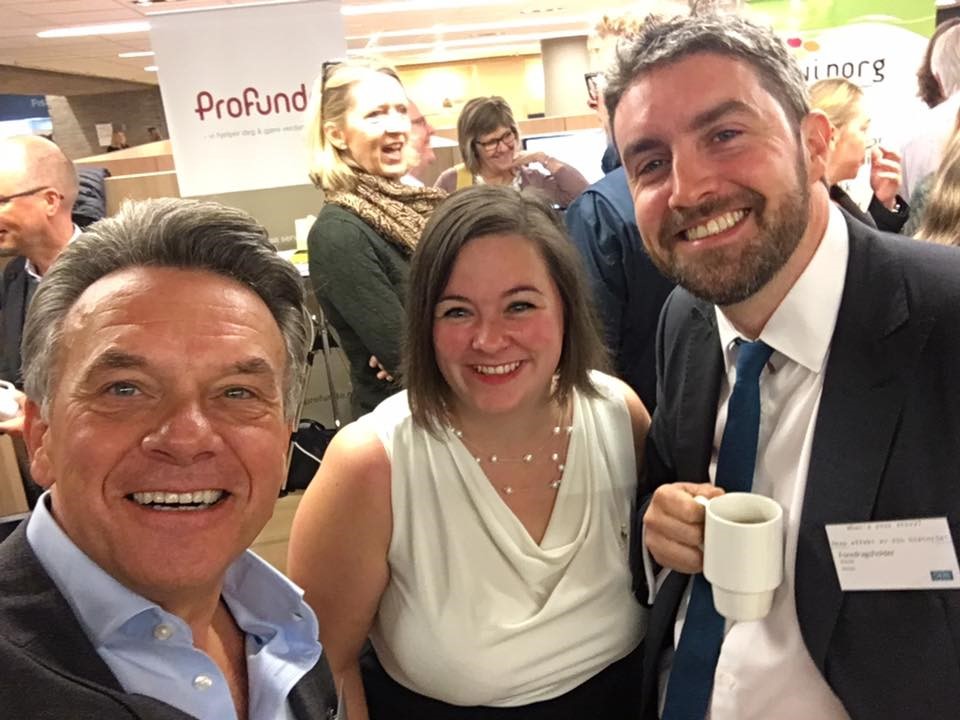Why getting together is good for fundraising

There was once a piano in the centre of the bar in the hotel where we gathered to share fundraising stories. As the night wore on, the crowd sang with gusto as the lone player took requests. Eventually as people left, it finally boiled down to just a hardy few, the quality of their singing never quite matching their persistence.
I remember that night many years ago and many others since as I pondered the memory making and often defining glow of bringing fundraisers together. I was sat last week at an NGO Skillshare, where staff had arrived from all over the world. The buzz was powerful as old friends reacquainted. Fundraisers, like many, are simply meant to get together. From the skills-based conference to technique-themed day, from the skillshare to the staff conference, to the team meeting. Together is where we hone our skills, share our success, and charge our batteries.

The nature of “together” is changing though. Once everyone worked in one place with other people and a picture of your cat or holiday on your desk. Now, we are everywhere and often nowhere. We may still have a desk and a picture but mostly we will be at home, in a coffee shop, in a meeting, on Skype, on a call or travelling. When we do sit down and breathe in one place, the chances are the people we used to know aren’t there that day. That day they are in Starbucks. We are more connected than ever before and yet we are more disconnected.
Connecting is a choice
Dorie Clark, author of Stand Out Networking, says, “The fact that technology has made it easier to interact with people across great distances and time zones actually makes face-to-face interaction even more valuable.”

She’s right. Connections that we used to take for granted, now require a deliberate choice. But that choice requires effort and a wider range of factors make up that decision to get together. Certainly cost. We know budgets are under pressure but increasingly this is an area that gets cut. Then there is competition. There are many more chances to draw fundraisers in to various meet ups, training, conferences and experiences and even more learning can be online – we can’t always decide, if at all. And then there is content and value. Payback needs to prove it, but our judgement of value is often misplaced. And then there’s ‘what would others think?’
A ‘jolly’ as my dad used to call these things is the root of the fear. It’s unjustifiable, not worth it, extravagant, a Roman orgy of excess. The commercial sector is perhaps more comfortable, but they equally have to justify it. To sell and make money you must engage and connect. Whilst the non-profit sector has its anxiety about perception and cost and what the donor might think, we can so easily convince ourselves its a cost that’s not worth it. For many, especially lone fundraisers, getting together is a complete luxury. For those in charity teams, it’s a struggle to make diminishing budgets go further.

Maybe we should reframe value. Rebecca Knight in HBRs How to get the most out of a conference, sets out some great strategies for getting value at a conference, based on a view of networking. But it’s more than that.
Janine Popick CMO of Dasheroo in Inc.com asks a key question when her staff set out their reasons for attending a conference – ‘what’s in it for the customer?’ So perhaps our question should be ‘what’s in it for the donor?’
Whats in it for the donor?
Here’s what. Better fundraising. Better ways to reach, inspire and engage. Better experience. Better use of resources. Better ways to manage risk and deliver more. Service, efficiency, delivery. But also better people. More connected, inspired, motivated, fed, informed, wiser, rounder, happier. Better at serving and doing. Not bringing together good people to do amazing things helps no one. It bleeds people dry of air, opportunity, experience and memories. The collective moments that define our learning and journey. It devalues, rather than enriches them as humans and serves no one except maybe the detractors and critics who we can never convince otherwise.

The leader who fails to see the value and benefit in bringing people together is a poor leader. A weak leader. A narrow leader. There was no piano player tonight as we gathered. But there was a familiar sense that anything was possible if we did it together.
2 Comments
duck life · August 30, 2024 at 09:35
Crafted by Wix Games, Duck Life Game invites players on a whimsical expedition into the life of a duckling, where they embark on a quest to train, compete, and explore their way to becoming the ultimate duck champion.
strands nyt · January 1, 2025 at 18:34
I also agree with your point of view and I think that gathering will be beneficial for fundraising, I appreciate your sharing and it really brings me a lot of new things.